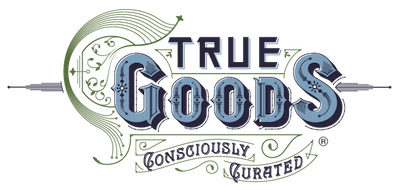Sustainability, like brands, must not be a fight against or a vision outside society, but part of it.
It is time to drop the proselytism, quit the “sacrifice for a better world” argument and above all stop trying to change people’s behaviors. In order to fully go mainstream, sustainability shouldn’t attempt to influence behavior, but instead make ‘the greener option’ desirable for everyone. Moreover, historically, experiments of standardization have often resulted from totalitarian regimes to dull aesthetics.
Sustainability needs grips so the general public can relate and aspire to it just as select policy makers, activists and scientists do. It also needs some positive theatre as to reverse its anti-establishment and “tree-hugging” reputations. Moreover, well-known conscious brands such as WWF, Fairtrade and even Al Gore still suffer from being quite one-dimensional. They mainly preach altruistic values whilst most people tend to prioritize personal desires before social and environmental needs.
From a theoretical perspective, it means embedding an evolutionary approach into the strategy for communicating sustainability. In spite of some tweaks, sustainability has been a clone of itself having become too vulnerable. As a concept, sustainability must improve its rate of adaptation to increase its chances of survival in our increasingly changing environment. To become more adaptable and survive in the wilderness of hungry consumers, sustainability needs to adapt its speech with a more emotional tonality and become the vessel driving positive consumption.
From a more pragmatic standpoint, sustainability must do two things.
First, put less emphasis on the benefits of being sustainable and instead create more symbols and icons that can stimulate emotional connections with greater audiences. IBM did incredibly well through their Smarter Planet strategy by using visual language and effective messaging to communicate progress in a very clear way. As a result, people somehow feel more attached to the brand. Such an emotional connection contributes to customer loyalty, employee engagement and above all pushes the idea that a Smarter Planet is the way forward. Successful marketers are fully aware of the power that carefully designed features and their sensorial effects have over us. Quoting Oscar Wilde: “It is only shallow people who do not judge by appearances.”
Second, sustainability needs to break away from behavioral expectations such as kindness, adaptability, altruism and others that typically characterize agreeable people. In order to create a mass-market sustainability strategy other personalities also have to be addressed and this is exactly where brands can have a huge opportunity to capitalize on different “behavioral segments.” Purchase impulses are triggered by different aspirational drives that must be considered in any context. In this sense, it is a more effective strategy to empower the existing myriad behaviors than to continue trying to change them.
A century of psychology meta-analyses has identified six major mental traits that are measurable and independent of age, gender, social settings, cultures and even species. These are intelligence, openness, conscientiousness, agreeableness, stability and extraversion. The “sustainability industry” has been showing good signs that multiple audiences now can wear the sustainability “badge” through their preferred brands. In psychographic terms, highly agreeable people will be the likely early adopters of sustainable products but innovators can accelerate the technology adoption lifecycle by considering more dynamic strategies. Instead of early adopters having to convince late majorities through trickle-down effects, why not use the six mental traits as catalysts to designing and marketing sustainability innovation?
People do not like to be told to do otherwise but to freely express their individualism.
Humanity’s common denominator is to express our own uniqueness and connect with like-minded peers forming meaningful groups. Ethical brands need to understand that their commercial success depends on triggering the uniqueness of human motivations first. Environmental and social causes come straight after as the connecting tissue of a broader human experience.
Boundaries and limitations are being broken as brands and sustainability regulators begin to realize that they are part of an ecosystem. From being a revolution, sustainability really needs to cool down and embrace evolution. United Cities and Local Governments (UCLG), the largest local government organization in the world, also known as the “UN for cities,” are the pioneering proponents of including culture as the fourth pillar of sustainable development. Brands are the symbols and icons of our culture. Embedding sustainability into the private sector by using culture can make the world healthier, safer, more tolerant and creative. Brands can be transactional gateways permeating our everyday lives. Importantly, they also have an embedded transformational potential to sell intangible values ranging from social acceptance to ideologies, including sustainability.
Special thanks to SustainableBrands.com and Sergio Brodsky who authored the original post, from which this has been adapted, on August 22, 2013.

